Filter by
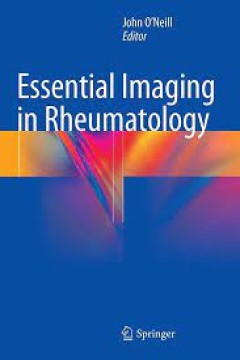
Essential Imaging in Rheumatology
This book offers an excellent review of the various rheumatological conditions, both common and uncommon, that may present on imaging on a daily basis. The book uses a unique format that will be beneficial for clinicians, radiologists, medical students, and consultant staff. The text is written by both rheumatology and radiology staff to provide a balanced approach. A clinical overview and the …
- Edition
- -
- ISBN/ISSN
- 978-1-4939-1673-3
- Collation
- 255 b/w illustrations, 122 illustrations in colour
- Series Title
- -
- Call Number
- -

Accidental Injury: Biomechanics and Prevention
This book provides a state-of-the-art look at the applied biomechanics of accidental injury and prevention. The editors, Drs. Narayan Yoganandan, Alan M. Nahum and John W. Melvin are recognized international leaders and researchers in injury biomechanics, prevention and trauma medicine. They have assembled renowned researchers as authors for 29 chapters to cover individual aspects of human inju…
- Edition
- Ed. 1
- ISBN/ISSN
- 978-1-4939-1732-7
- Collation
- XVIII, 851
- Series Title
- -
- Call Number
- 616.07 ACC a
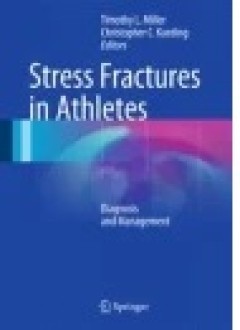
Stress Fractures in Athletes
Stress fractures are fatigue failures of bone caused by unusual or repeated stress on bone and are among the more common sports injuries encountered. Often going unreported or occasionally unnoticed, athletes run the risk of a more serious fracture if untreated. Stress Fractures in Athletes focuses on the presentation, evaluation and treatment of these injuries. Divided into two sections, the f…
- Edition
- -
- ISBN/ISSN
- 978-3-319-09238-6
- Collation
- -
- Series Title
- -
- Call Number
- -
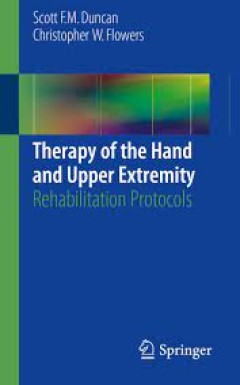
Therapy of the Hand and Upper Extremity
Presenting over 100 rehabilitation protocols for the hand and upper extremity in an easy-to-use, step-by-step format, this practical reference provides surgeons and therapists alike with a go-to source for the therapy technique or strategy appropriate for their patients. Covering injuries from the shoulder, elbow, wrist, hand and fingers, each protocol includes bullet-pointed steps in daily or …
- Edition
- -
- ISBN/ISSN
- 978-3-319-14412-2
- Collation
- XVI, 282
- Series Title
- -
- Call Number
- -
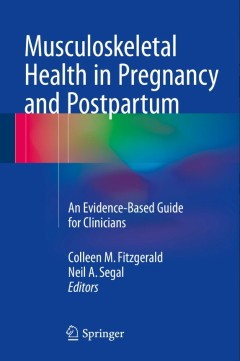
Musculoskeletal Health in Pregnancy and Postpartum
Providing clinicians with a comprehensive, evidence-based summary of musculoskeletal health in pregnancy and postpartum, this is the first book of its kind to describe the physiologic changes, prevalence, etiology, diagnostic strategies, and effective treatments for the most common musculoskeletal clinical conditions encountered during this phase of life. Lumbopelvic pain, upper and lower extre…
- Edition
- 1
- ISBN/ISSN
- 978-3-319-14318-7
- Collation
- XI, 284
- Series Title
- -
- Call Number
- -
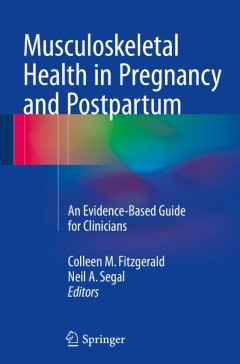
Musculoskeletal Health in Pregnancy and Postpartum
Providing clinicians with a comprehensive, evidence-based summary of musculoskeletal health in pregnancy and postpartum, this is the first book of its kind to describe the physiologic changes, prevalence, etiology, diagnostic strategies, and effective treatments for the most common musculoskeletal clinical conditions encountered during this phase of life. Lumbopelvic pain, upper and lower extre…
- Edition
- 1
- ISBN/ISSN
- 978-3-319-14318-7
- Collation
- XI, 284
- Series Title
- -
- Call Number
- -
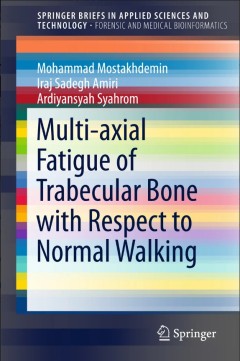
Multi-axial Fatigue of Trabecular Bone with Respect to Normal Walking
This book focuses on the analysis and treatment of osteoporotic bone based on drug administration, tracking fatigue behavior and taking into consideration the mechanical interaction of implants with trabecular bone. Weak trabeculae are one of the most important clinical features that need to be addressed in order to prevent hip joint fractures.
- Edition
- 1
- ISBN/ISSN
- 2191-530X
- Collation
- VIII, 55
- Series Title
- SpringerBriefs in Applied Sciences and Technology
- Call Number
- -
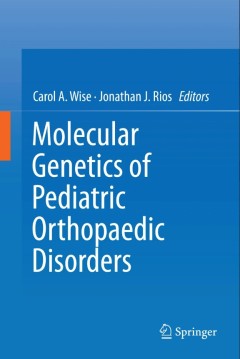
Molecular Genetics of Pediatric Orthopaedic Disorders
In the past two decades we have seen a surge forward in understanding the genetics and biochemistry underlying many pediatric orthopaedic disorders. A few projects have even progressed into the realm of clinical trials that are primarily aimed at controlling progressive disease. Meanwhile, genomic technology development has outpaced expectations and is enabling gene discovery for disorders that…
- Edition
- 1
- ISBN/ISSN
- 978-1-4939-2168-3
- Collation
- XII, 168
- Series Title
- Springer New York, NY
- Call Number
- -
 Computer Science, Information & General Works
Computer Science, Information & General Works  Philosophy & Psychology
Philosophy & Psychology  Religion
Religion  Social Sciences
Social Sciences  Language
Language  Pure Science
Pure Science  Applied Sciences
Applied Sciences  Art & Recreation
Art & Recreation  Literature
Literature  History & Geography
History & Geography